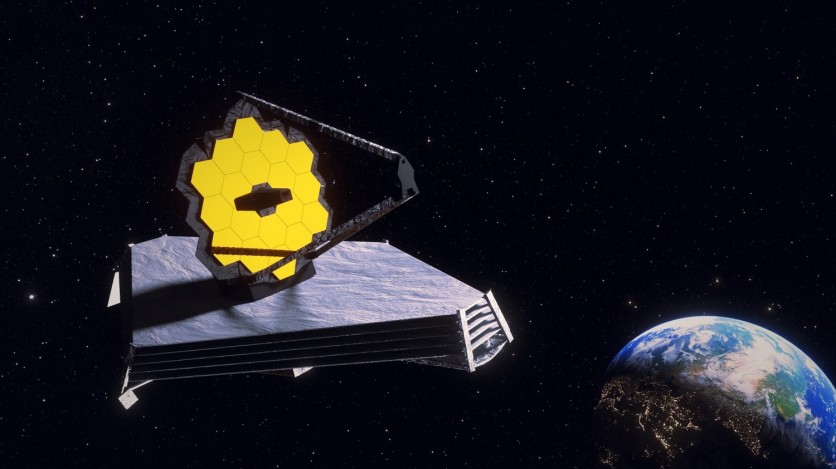NASA's James Webb Space Telescope has achieved a remarkable feat, observing the chemical signature of carbon-rich dust grains in the early universe for the first time.
This discovery has far-reaching implications for our understanding of cosmic dust and its role in the formation and evolution of galaxies.

Created by the Earliest Stars
Previous observations had detected similar signatures in the more recent universe. However, it was deemed unlikely that complex carbon-based molecules like polycyclic aromatic hydrocarbons (PAHs) could have formed in the early universe within the first billion years of cosmic time.
A team of international researchers, including experts from the University of Cambridge, now suggests that NASA's James Webb Space Telescope may have observed a different species of carbon-based molecule - tiny graphite, or diamond-like grains created by the earliest stars or supernovas.
Cosmic dust plays a crucial role in the universe's evolution, as it serves as the building blocks for new stars and planets. These grains absorb stellar light at specific wavelengths, making certain regions challenging to observe.
However, certain molecules consistently interact with specific wavelengths of light, allowing astronomers to gain insights into the composition of cosmic dust.
Using the James Webb Space Telescope's extraordinary sensitivity, the Cambridge-led team detected the presence of carbon-rich dust grains a mere billion years after the universe's birth.
The team noted that carbon-rich dust grains have a unique ability to absorb ultraviolet light around 217.5 nanometers, which was directly observed in the spectra of early galaxies for the first time.
However, the observed feature peaked at 226.3 nanometers, deviating from the expected 217.5-nanometer wavelength associated with PAHs and tiny graphitic grains.
This discrepancy hints at the possibility of a different mix of grains, such as graphite- or diamond-like ones. Such grains could have been produced by Wolf-Rayet stars or ejected material from supernovas, according to lead author Dr. Joris Witstok from Cambridge's Kavli Institute for Cosmology.
NASA's James Webb Space Telescope and Diamond-Like Dust
While existing models struggle to fully explain these results, the discovery opens the door to refining models and conducting future observations to gain deeper insights into the early formation of cosmic dust.
The James Webb Space Telescope's Near-Infrared Spectrograph (NIRSpec) played a pivotal role in this discovery, providing unparalleled sensitivity for near-infrared spectroscopy.
The team plans to collaborate with theorists to further investigate dust production and growth in galaxies, shedding light on the origins of dust and heavy elements in the early universe.
The observation is attributed to the JWST Advanced Deep Extragalactic Survey (JADES), one of the largest programs in Webb's first year of science. It has revealed hundreds of galaxies from a time when the universe was less than 600 million years old, including some of the most distant galaxies ever observed.
"The ultradeep data from JWST is showing us that grains made up of diamond-like dust can form in the most primordial of systems," said co-author Dr. Renske Smit from Liverpool John Moores University.
"This is completely overthrowing models of dust formation and opening up a whole new way of studying the chemical enrichment of the very first galaxies," Smit added.
The findings of the team were published in the journal Nature.

ⓒ 2026 TECHTIMES.com All rights reserved. Do not reproduce without permission.




